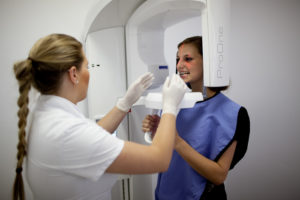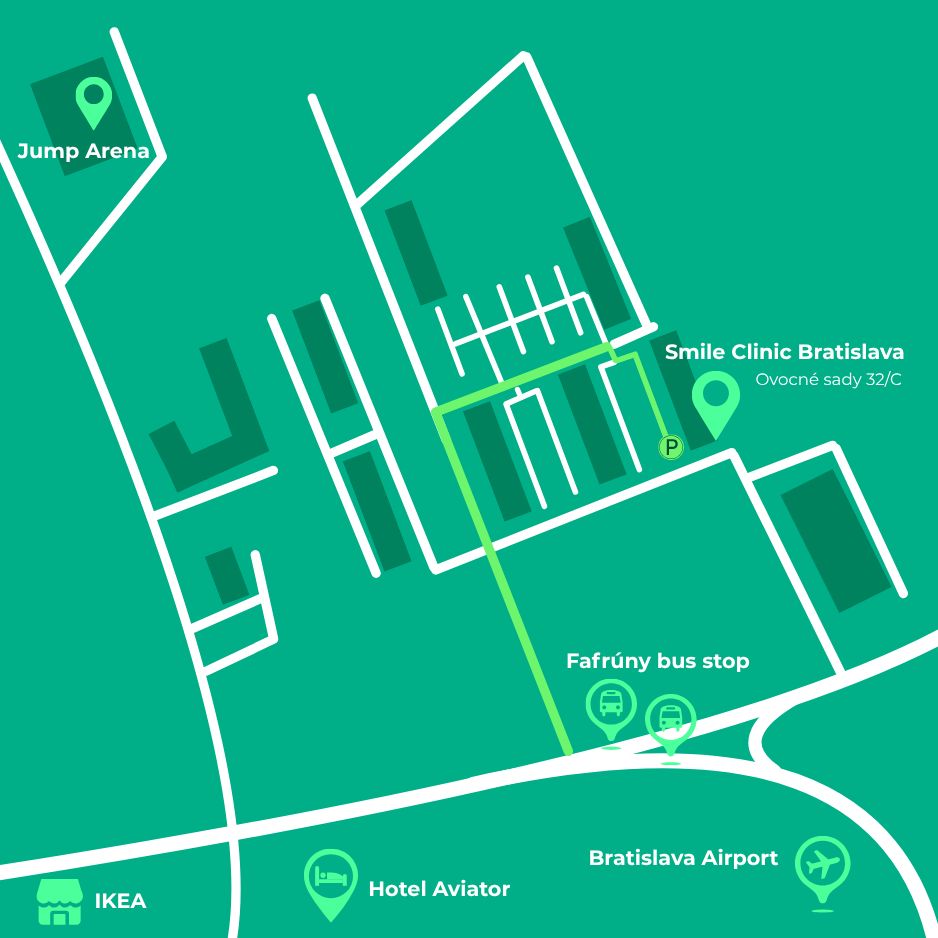Dental X-rays are a useful diagnostic tool when helping your dentist detect damage and disease not visible during a personal visual dental exam. How often X-rays should be taken and dental X-rays safety, depends on your present oral health, your age, your risk for disease, and any signs and symptoms of oral problems.
Your dentist may recommend X-rays to determine the present status of your oral health and have a baseline to help identify dental work that needs to be done, as well as a record of the state of your teeth before any dental work is completed.
Further X-rays may need to be done during treatment to determine progress, and certainly after, so that the dentist has a record of your current dental state upon completion of the treatment and leaving the clinic.
Dental X-ray exams are considered very safe; however do require very low levels of radiation exposure, which is often a point of question by many dental patients.
A single intraoral image transmits about 4 microsieverts of radiation. A panoramic X-ray can yield 26 microsieverts and a full mouth CT scan can yield 88 microsieverts.
SO HOW DO DENTAL X-RAYS COMPARE?
It has been over a decade since the current radiation safety regulations that dental practices must comply with were introduced in the UK, so here are the US examples, but let’s start with the fact that radiation is a natural phenomenon. We get it from food, air, cosmic radiation from space, and from the ground (typically from radon gas that seeps from the earth).
The EPA estimates that a person living in the United States receives about 3,000 microsieverts of radiation each year from these background sources. Health physicists generally agree on limiting a person’s exposure beyond background radiation (3,000) to about 1,000 additional microsieverts per year from all non-natural sources. Some scientists even assert that low levels of radiation are beneficial to health (this idea is known as hormesis).
Let’s explore some everyday sources of radiation. Here are some examples: Bananas contain about 1 microsievert of radiation. A five-hour airline flight contains 25 microsieverts. A year of TV watching will add 10 microsieverts and breathing air for one day yields 6 microsieverts. A chest X-ray yields 120 microsieverts while a mammogram yields 440 microsieverts. A single abdominal CT scan yields about 7,000 microsieverts.
The United States Nuclear Regulatory Commission and the EPA state that the annual occupation limit for an adult is around 50,000 microsieverts. Consequently, a patient would need to receive 3,125 sets of 4 bitewing x-rays in a single year before hitting that limit. If an individual received yearly bitewings as an adult from age 20 to age 100, that would only result in 1,280 microsieverts of exposure.
DENTAL X-RAYS- HOW SAFE ARE THEY?
According to the EPA, there is no firm basis for setting a “safe” level of exposure. However, there does appear to be threshold exposures. For example, the smallest acute health change listed by the EPA, changes to our blood chemistry, would result from an exposure of 500,000 microsieverts. That would equate to 166 years of living with regular background radiation of 3,000 microsieverts per year or eating 136.9 bananas every day for 100 years.
Do you need to wear a special aluminum foil hat when you have dental X-rays taken? The answer is no. In fact, because the radiation exposure is so low, lead aprons are not physiologically necessary, but their use is still recommended by various clinics for dental patients, especially for children and pregnant women whose tissues are more radio-sensitive.
So if you are pregnant, tell the dentist. Dental X-rays safety should not preclude you delaying a dental x-ray if you are trying to become pregnant or are breastfeeding.
In conclusion, the health benefits of dental X-rays outweigh the apparent risks.
At Smile Clinic Slovakia we are concerned for your health and safety and are here to meet all your dental needs abroad. Please contact us today for a free quote.





